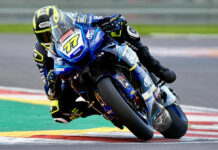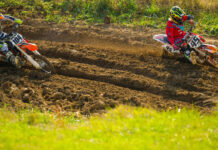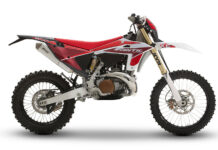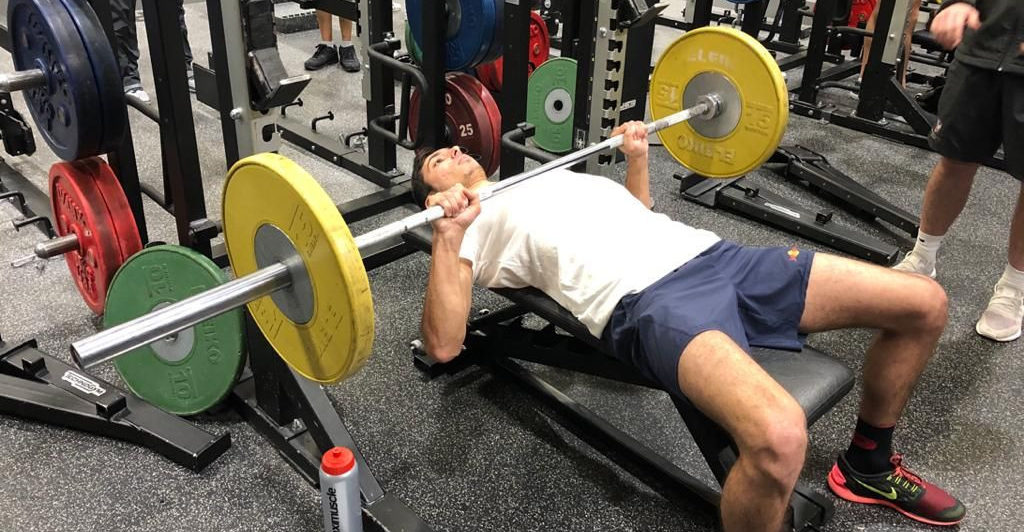Training day: Yamaha World Superbike Championship Riders’ Fitness put to the Test at Loughborough Sport
Prior to the start of the 2020 season, Yamaha’s four World Superbike Championship riders headed to Loughborough Sport, housed within Loughborough University, United Kingdom, for a series of fitness tests designed to assess their readiness to manage the unique physical demands of a gruelling WorldSBK season.
Pata Yamaha’s two riders, Michael van der Mark and Philip Island race-winner Toprak Razgatlıoğlu, were joined by GRT Yamaha WorldSBK Junior Team’s duo, Federico Caricasulo and Garrett Gerloff, to take part in a series of tests during the day, which were widely similar to those conducted across other high-demanding sports, including physiology tests, strength and conditioning, and physiotherapy screening.
Tests conducted can help with data to determine the correlation between physical fitness and rider performance, with the results allowing riders to receive tailored training routines to maximise their on-track results. Alongside this, sports nutritionists consulted with the riders to advise them on the best foods and hydration methods during a typical race weekend.
Rhona Pearce, Sports Science Manager at Loughborough Sport Performance Centre, explained what her team’s aims are: “While we have done a lot of physiology tests with riders over the past 10 to 15 years, our strength & conditioning and physio teams have done less, and this is the first year we have looked to join all our services together to support motorcycle racers.
“So, we are continually looking at how we can improve this support and getting feedback from the Yamaha team on the testing and reports has been really useful in helping us to progress what we do to better support the team.”
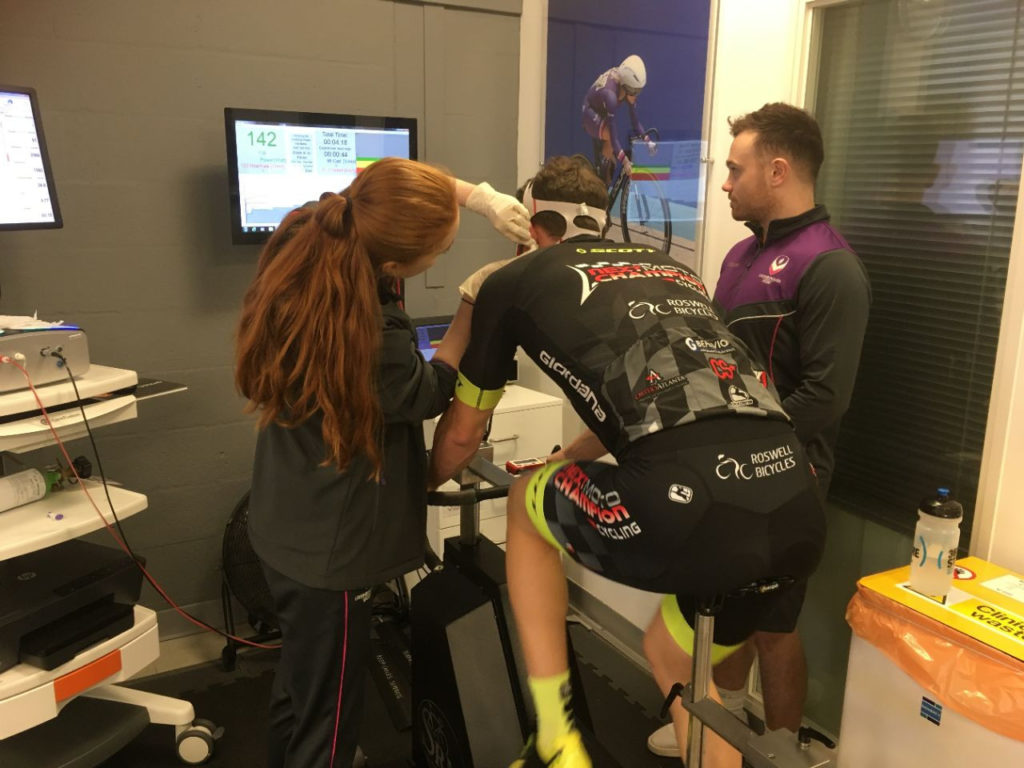
In the physiology lab, the riders did a standard set of cycling physiology tests measuring VO2max, maximal aerobic power output, and lactate thresholds. This can sometimes directly correlate with performance in sports like cycling, and although this is less directly relevant in motorcycle racing, Loughborough Sport has found after testing almost 100 riders that generally better race fitness is produced by those riders with a higher VO2max.
Strength and capacity tests were used to determine upper and lower body strength, as well as core fitness, using techniques such as the one-rep max to see the riders’ maximum force output.
Physiotherapy screening began with analysing the riders’ medical history and at what factors may affect performance, whether that be a physical injury from a fall or any current or previous health conditions.
The riders finished the day with a serious challenge – 45 minutes of cycling in full race leathers, helmet and gloves in a climate-controlled heat chamber to measure how their physiology, natural hydration levels and durability are affected by racing in hot environments. These results are important in order to understand how to stay appropriately hydrated during a race event in somewhere like Thailand or even southern Europe in mid-summer.
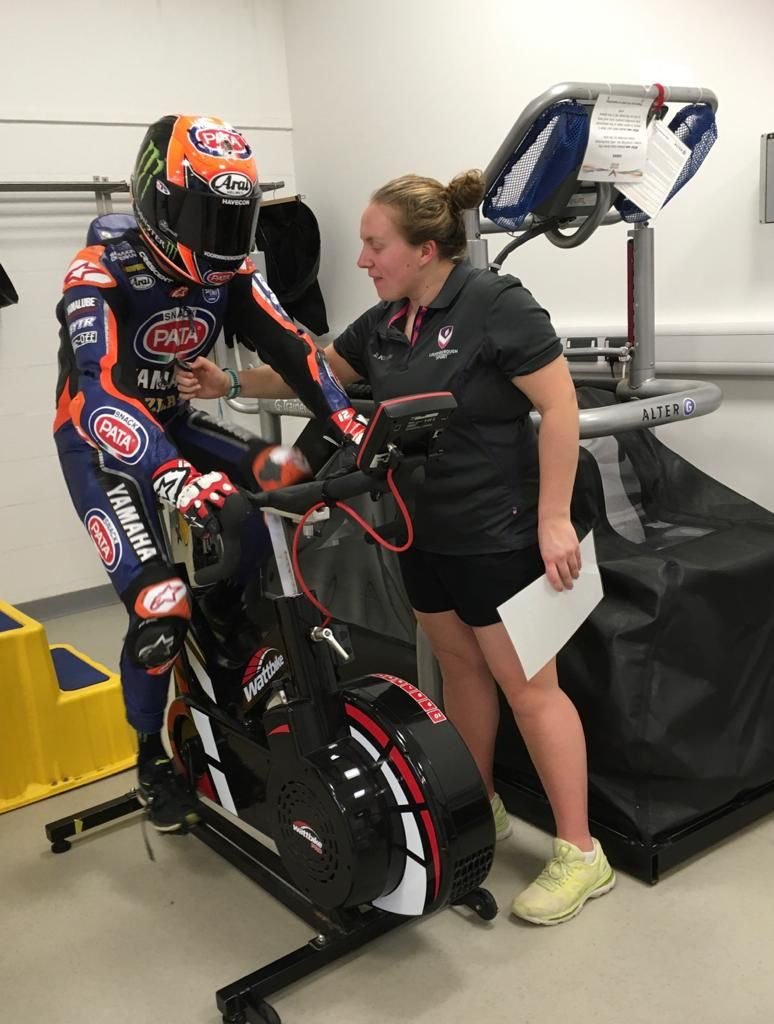
Pearce explained what her team found from the results of these tests: “There was quite a variation between the four riders we tested, with all of them having comparable results in at least one area with good athletes from other sports. In the main, the most comparable were the strength tests.
“We have had some riders in the lab with excellent physiology test results, up there with national level runners and cyclists, but the strength element is probably more closely related to performance for motorcycle racing.”
Motorcycle racing has very unique demands when compared to other sports though, with riders withstanding continuous stress on their whole bodies for more than 30 minutes during races, whereas other athletes tend to have those stresses for a shorter duration or have more regular breaks.
Although the riders did not display especially high max force outputs, unsurprising when you consider the lower weight requirements for racing, they did show impressive muscle endurance, while Pearce also noted their motivation to push through discomfort during the exercises.
After compiling the data, each rider received specific training advice based on their test results and a physical profile highlighting which areas to focus on. Pearce said: “We aimed to give each rider advice on which areas of their fitness they would most benefit from working on, and specific training sessions to allow them to do this. Obviously with the four riders having different exercise preferences, we tried to give advice on how they could adapt the physiology training sessions to suit their interests and equipment.
“We used the testing and screening to generate a physical profile of each rider from a strength, stability and mobility perspective. Using this profile, we are able to identify areas of strength and weakness upon which we can then place more or less emphasis. Conversations with the riders are also very valued, as that gives us insight into their personal riding style and the areas in which they suffer fatigue during races or issues they have had previously.”
Due to the current COVID-19 crisis, the Loughborough Sport Performance Centre team are unable to provide follow-up tests for the riders, but usually they would undertake these assessments two to three times per year.
Had the season gone ahead as normal, the Yamaha riders – who undertook the tests in January – would likely receive follow-up tests around the Donington Park WorldSBK round in July, with a final assessment for the year taking place after the season finale in Argentina.
“In an ideal world the first test would happen as they get back into training after the end of the season, say around November time,” Pearce confirmed. “Another test before racing starts would be perfect, as we could then see how their fitness has developed during the time when they should have the most opportunity to focus on specific improvements.”
Outside of motorcycle racing, the current coronavirus pandemic also means that people are having their daily routines interrupted due to the lockdowns and restrictions in place around the world, with Pearce giving some final words of advice on how to maintain fitness during this tough period.
“We would say the most important thing is to keep in the habit of training regularly, no matter what that might look like, and keep it fun and interesting, whether it’s simply exercising in other areas of your house or having a virtual challenge with friends or family so that you get the mental benefits as well as physical.
“There is a lot of information and a lot of resources people can access to help them train at home, and we are going to be sharing our ideas on social media. If you usually lift weights in the gym then getting resourceful at home with whatever you can find to use as weights or create resistance is good, but also consider thinking more about technique, good posture and movement patterns when your focus isn’t on lifting the biggest weight you can.”
Outside of motorcycle racing, the current coronavirus pandemic also means that people are having their daily routines interrupted due to the lockdowns and restrictions in place around the world, with Pearce giving some final words of advice on how to maintain fitness during this tough period.
“We would say the most important thing is to keep in the habit of training regularly, no matter what that might look like, and keep it fun and interesting, whether it’s simply exercising in other areas of your house or having a virtual challenge with friends or family so that you get the mental benefits as well as physical.
“There is a lot of information and a lot of resources people can access to help them train at home, and we are going to be sharing our ideas on social media. If you usually lift weights in the gym then getting resourceful at home with whatever you can find to use as weights or create resistance is good, but also consider thinking more about technique, good posture and movement patterns when your focus isn’t on lifting the biggest weight you can.”
Check out the Loughborough Sport Performance Centre on Twitter, on Facebook and Instagram. More information is also available on their website.


